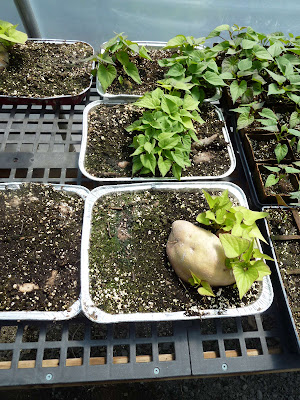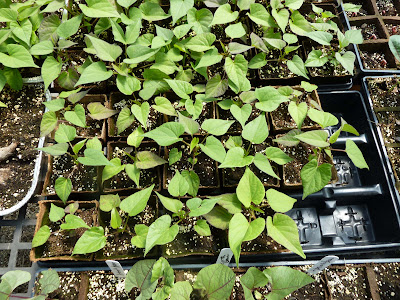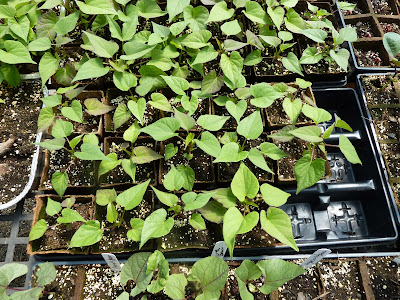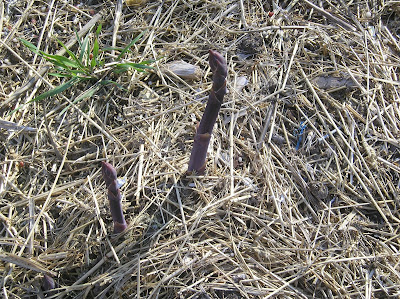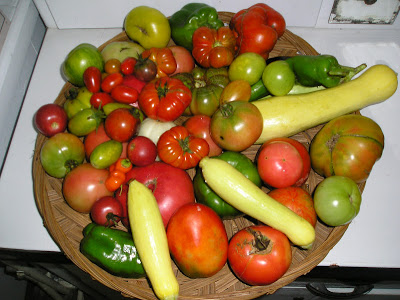 |
Girl Magnolia 'Betty'
Picture by R.K. Parisien |
Jill's post below on
Magnolia stellata prompted me to research the Magnolia specimen in my landscape. I got the plant from fellow Master Gardener Iris Masters when it outgrew the space in her garden. It bloomed beautifully this year, as you can tell from the pictures (taken at various times throughout March). Googling around, I narrowed the identification down to a
Magnolia liliforum, but wasn't sure, so I enlisted the help of Linda Secrist, Kathy Engle, and Jill Hudock, to see if we could positively identify it before creating this post.
With that team working on it, we were settling on a cultivar of
Saucer Magnolia, or
Magnolia x soulangiana, but weren't sure which cultivar. At some point, it dawned on me to ask Iris (Duh! moment) and she came through beautifully, identifying it as a Magnolia Kosar De Vos Hybrid from the Little Girl Series.
From Iris: "Deciduous, 12 ft H, 15 ft W. Bloom at age 4-5 years. Colors range from deep to pale purple (sometimes pink or white inside) Bloom in spring before leaf-out. Sometimes sporadic rebloom in summer. Hybrid between
M. liliflora ‘Nigra’ and
M. stellata ‘Rosea’, bred to bloom later than
M. stellata to avoid frost damage. Erect shrubby growers bearing girls names: Ann, Betty, Jane, Judy, Pinky, Randy, Ricki, Susan. This specimen is Betty."
 |
Girl Magnolia 'Betty'
Picture by R.K. Parisien |
 |
Girl Magnolia 'Betty'
Picture by R.K. Parisien |
 |
Girl Magnolia 'Betty'
Picture by R.K. Parisien |
From the
National Arboretum web site:
The U.S. National Arboretum presents eight hybrid magnolia cultivars affectionately known as ''The Girls.'' These selections offer a spectacular floral display approximately two weeks later than M. stellata and M. x soulangiana, thus decreasing the possibility of spring frost damage. The flowers are doubly delightful! They welcome spring in shades of pink to purple and later surprise you with occasional summer blooms. Plants grow as multistemmed large shrubs or small trees bearing slightly leathery leaves that stand up well to summer heat and drought. Winter reveals the plant architecture highlighted by smooth grey bark and fuzzy flower buds. In every season "The Girls'' embellish the landscape.
''The Girl Magnolias'' are selections resulting from controlled pollinations of Magnolia liliflora 'Nigra' by M. stellata 'Rosea'; M. liliflora 'Reflorescens' by M. stellata 'Rosea'; and M. liliflora 'Reflorescens' by M. stellata 'Waterlily'. The crosses were made at the U.S. National Arboretum in 1955 and 1956 by William F. Kosar and Dr. Francis de Vos. All are F1 hybrids and reported to be sterile triploid selections. These plants were selected and named by William F. Kosar. Released 1968.
Plants grow best in full sun to light shade; prefer loam soil with adequate moisture; tolerate poorly drained, heavy clay soils or dry areas.
Specimen plant or mass planting in open recreation areas, industrial parks, or in the home garden. Locate to accentuate floral display, silvery gray bark, multi-stemmed habit, and winter architecture.
Readily available from retail and wholesale nurseries.
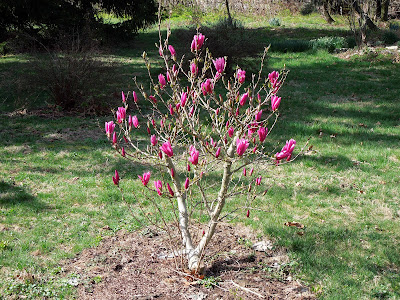 |
Girl Magnolia 'Betty'
Picture by R.K. Parisien |
In this picture, you can see suckers at the base of the shrub that were pruned away today, after Jill advised me to, to give strength to the main stem.
Another interesting fact about Magnolia blooms. They lack nectar, but are full of pollen
which attracts beetles:
Magnolia flowers are typically pollinated by beetles. Magnolias flowers do not produce nectar but they do produce large quantities of pollen. The pollen is high in protein and the beetles use it for food. There are many different types of beetles that pollinate the various species of magnolias located in southeastern Asia and eastern North America.
More on beetle pollination
here.






